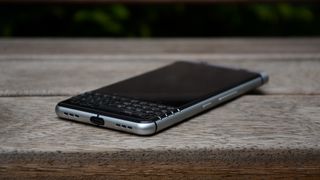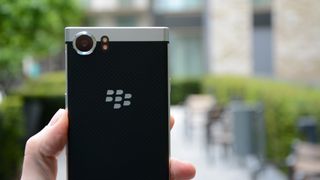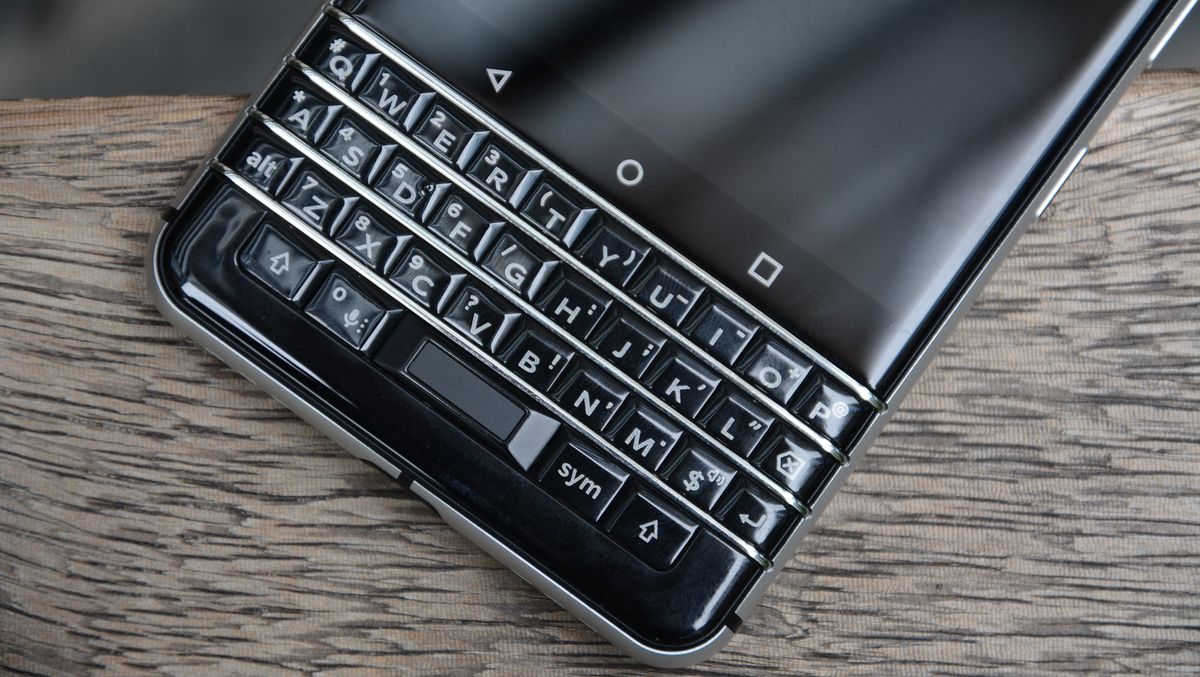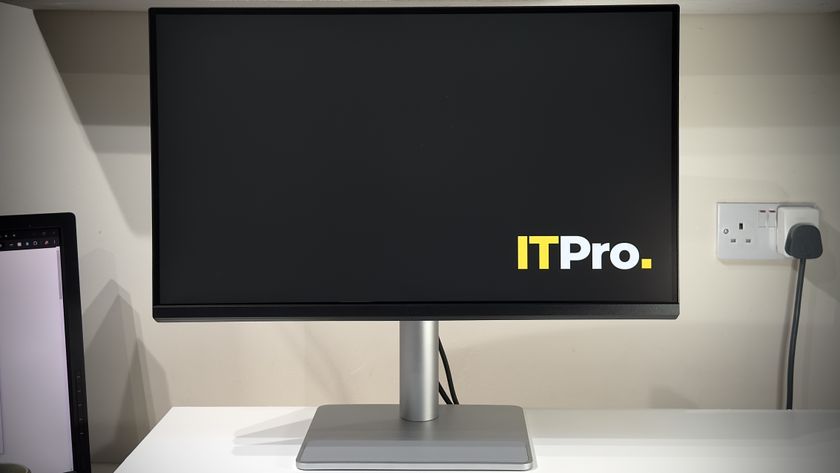Display
In terms of the screen itself, the Keyone's 1,680 x 1,080 IPS panel acquits itself admirably. A maximum brightness of 497cd/m2 is very good indeed, as are its results for contrast and colour accuracy. Technically speaking, it's a great display.
The main issue with it is that the addition of a physical keyboard leaves it rather cramped. Despite the phone's 149mm x 72mm footprint, the screen itself only measures 4.5in across the diagonal. It's also stuck with an unusual 3:2 aspect ratio, which means that some content can end up looking slightly squashed, or with black bars at the edges.
Irritatingly, BlackBerry has decided to sandwich the capacitive navigation buttons below the screen, but above the keyboard. This initially played havoc with our muscle memory, and our instinct was to hit the space bar in order to go back to the home screen. We got used to the slightly alien layout after a while, but we'd still much rather have the navigation buttons at the bottom.
Performance
Speed and performance have historically been something of a weak point for BlackBerry, and the technical specifications for the Keyone immediately start to ring alarm bells. The 2GHz Qualcomm Snapdragon 625 processor is lagging quite a bit behind the frontline competition, and 3GB of RAM certainly isn't going to impress anyone.
We couldn't run our standard Geekbench performance benchmarks due to compatibility issues, but the Huawei Nova, which has identical CPU and RAM allocations, is distinctly mediocre. The Nova, though, was considerably cheaper at launch than the Keyone - at 284 exc VAT compared to the Keyone's 415 exc VAT.

According to our Nova tests, the Keyone's performance would be wildly outclassed by the OnePlus 3T and Honor 8 Pro, both of which are cheaper to buy. In fact, these scores suggest that the Keyone's specs would be on a par with budget devices like the Moto G5 Plus, which is disappointing considering the price bracket it's in.
In daily use, we noticed several instances of stuttering and lag and there were a couple of times when the Keyone freaked out, forcing us to reboot the device. For a phone that retails for just shy of 500, this really isn't good.
The Keyone's battery life is similarly underwhelming. In our tests, it lasted just 12hrs 24mins, lagging behind much cheaper mid-range devices. We frequently found ourselves having to top up the Keyone's charge midway through the day.
On the bright side, that's made fairly easy with the inclusion of a USB-C port and fast charging technology. It uses the Qualcomm QuickCharge 3.0 technology too, so you'll be able to use any compatible adapter to juice up.
Camera
BlackBerry's cameras typically haven't been fantastic compared to other manufacturers. Thankfully, things are slightly improved here, with a 12MP, Sony-manufactured sensor and a f/2.0 aperture delivering credible results. Detail and colour accuracy was strong, as was the exposure. Shots weren't quite as good as the superlative Pixel XL, but they weren't that far off.

Somewhat unsurprisingly, low-light performance is more of a let-down. Detail is lost in darker areas, moving subjects will often blur, and shots without flash will look soft and fuzzy. The absence of optical image stabilisation is also painfully apparent.
Features
Aside from the physical keyboard, BlackBerry's other unique selling-point is its pedigree in enterprise IT security and management. As such, security is front and centre with the Keyone.
BlackBerry has billed it as the most secure Android smartphone', with a slew of hardware and software-based security features, built-in security monitoring apps, and monthly updates to plug security holes.
The primary user-facing security app is BlackBerry's DTEK app, which scans your phone's settings and advises you of the best ways to optimise your phone's security, like setting up a secure password and turning on device encryption. There are also security measures implemented at the silicone level to provide additional peace of mind.
Elsewhere, the Keyone features a microSD card slot, allowing the memory to be expanded by up to 2TB, and a physical convenience key', which you can remap to any app or shortcut you choose.
Verdict
Our initial impressions of the device were positive, but like some of BlackBerry's recent products, the BlackBerry Keyone ultimately left us feeling disappointed. It's a step in the right direction after the dreadful DTEK60, and there's a lot to like about it - it's just about the only phone with a physical keyboard, after all - but there's just too many mistakes here.
The main problem is the sub-par specs on a 500 phone. There are other issues too, though - the design isn't quite as useful or intuitive as a slider, and as a result, both the screen and keyboard feel cramped.
If you're really pining for a physical keyboard, then the BlackBerry Keyone will see you right, but to be honest, we're not so sure that anybody is craving physical buttons any longer. In every other respect, the Keyone is outclassed by cheaper, more powerful and more impressive devices.
Verdict
The BlackBerry Keyone showed signs of promise, but ultimately its positive points just can't overcome the underpowered hardware and design compromise that plague it. Unless you're dead-set on having a physical keyboard, the Keyone isn;t really worth your time.
| CPU | 2GHz Qualcomm Snapdragon 625 |
| RAM | 3GB |
| Storage | 32GB |
| Display | 4.5in, 1,680 x 1,080 IPS screen |
Adam Shepherd has been a technology journalist since 2015, covering everything from cloud storage and security, to smartphones and servers. Over the course of his career, he’s seen the spread of 5G, the growing ubiquity of wireless devices, and the start of the connected revolution. He’s also been to more trade shows and technology conferences than he cares to count.
Adam is an avid follower of the latest hardware innovations, and he is never happier than when tinkering with complex network configurations, or exploring a new Linux distro. He was also previously a co-host on the ITPro Podcast, where he was often found ranting about his love of strange gadgets, his disdain for Windows Mobile, and everything in between.
You can find Adam tweeting about enterprise technology (or more often bad jokes) @AdamShepherUK.














